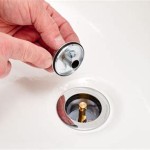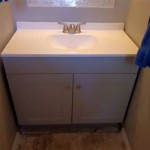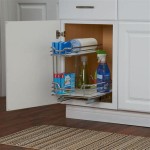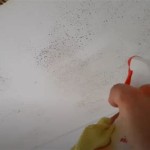How to Replace Broken Bathroom Wall Tile
A broken bathroom wall tile can be an eyesore and a potential safety hazard. Fortunately, replacing a broken tile is a relatively simple DIY project that can be accomplished with a few basic tools and materials. This article will guide you through the process of replacing broken bathroom wall tile, ensuring a seamless and professional finish.
1. Gather the Necessary Tools and Materials
Before embarking on your tile replacement project, it is essential to gather all necessary tools and materials. This will ensure a smooth and efficient process:
- New tile: Purchase a tile that matches the existing ones as closely as possible. If the original tile is no longer available, consider using a similar tile that complements the overall bathroom design.
- Tile adhesive: Choose a high-quality tile adhesive specifically designed for bathroom applications. This ensures strong adhesion and water resistance.
- Grout: Select a grout that matches the existing grout in color and texture for a cohesive look.
- Grout float: This tool is necessary for applying and smoothing the grout.
- Grout sponge: A damp sponge is essential for cleaning excess grout.
- Notched trowel: This tool helps spread the tile adhesive evenly.
- Tile cutter: If the new tile needs to be cut to size, a tile cutter is essential. Alternatively, a wet saw can also be used.
- Measuring tape: This tool is necessary for accurate measurements.
- Level: A level ensures the new tile is installed straight and flush.
- Hammer and chisel: These tools are used to remove the broken tile.
- Safety glasses: Protect your eyes from flying debris during the removal process.
- Gloves: Wear gloves to protect your hands from the adhesive and grout.
- Bucket: This is used for mixing the tile adhesive and grout.
- Clean rags: These are used to clean up any spills or excess adhesive.
2. Prepare the Tile for Removal
Once you have gathered your tools and materials, the next step is to prepare the broken tile for removal. This involves carefully detaching it from the wall without causing any damage to the surrounding tiles:
- Remove grout: Use a grout removal tool or a sharp utility knife to carefully remove the grout surrounding the broken tile. This step is crucial to prevent damaging the surrounding tiles during the removal process.
- Chip away the tile: Gently tap the edges of the broken tile with a hammer and chisel to loosen it from the wall. Start by applying light taps and gradually increase the force as needed. Be careful not to damage the surrounding tiles or the wall.
- Clean the area: Once the broken tile has been removed, clean the area thoroughly with a damp cloth or sponge to remove any remaining debris or adhesive. This ensures a clean surface for the new tile.
3. Install the New Tile
With the broken tile removed and the area cleaned, you are ready to install the new tile. Follow these steps to ensure a secure and professional installation:
- Prepare the adhesive: Mix the tile adhesive according to the manufacturer's instructions. Ensure the consistency is smooth and spreadable. Avoid mixing too much adhesive at once, as it can harden quickly.
- Apply adhesive: Use a notched trowel to apply a layer of adhesive to the back of the new tile. The notches on the trowel ensure even distribution and create a good bond between the tile and the wall.
- Position the tile: Carefully position the new tile in the space left by the broken tile. Use a level to ensure it is straight and flush with the surrounding tiles. Gently press the tile into the adhesive, ensuring it is securely in place.
- Clean excess adhesive: Immediately wipe away any excess adhesive that oozes out from under the tile with a damp cloth. This prevents the adhesive from drying and becoming difficult to remove.
- Allow the adhesive to cure: Refer to the manufacturer's instructions for the recommended curing time for the adhesive. Avoid applying grout before the adhesive has fully cured, as this can compromise the bond between the tile and the wall.
4. Grout the Tile
Once the adhesive has cured, you can proceed with grouting the tile. This step completes the installation process and creates a watertight seal:
- Mix the grout: Mix the grout according to the manufacturer's instructions. Ensure the consistency is smooth and spreadable, similar to peanut butter.
- Apply grout: Using a grout float, apply the grout to the spaces between the new tile and the surrounding tiles. Make sure to fill the gaps completely and create a smooth, even surface.
- Clean excess grout: After applying the grout, immediately use a damp sponge to wipe away excess grout. This ensures the grout lines are neat and clean.
- Allow the grout to cure: Refer to the manufacturer's instructions for the grout's curing time. Avoid using the shower or tub until the grout has fully cured to prevent damage.
- Seal the grout: Once the grout is cured, apply a sealant to protect it from water and stains. This step is essential for maintaining the appearance and longevity of the grout.
Replacing a broken bathroom wall tile is a straightforward task that can be tackled by most homeowners. By following these steps and taking necessary precautions, you can ensure a successful installation and a beautiful bathroom.

Collins Diy Survival Demos How To Fix A Broken Tile

How To Remove Replace One Bathroom Tile Ceramic Repair

Why Ed Tiles In Your Bathroom Are A Problem Shower Sealed

How To Cover Damaged Bathroom Walls On A Budget

Easy Diy Guide On Removing Tiles From Walls Fantastic Handyman Au

Water Damage Behind Shower Tiles

Home Improvement Bathroom Wall Tile Repair Diy Shower

How To Replace Ed And Broken Shower Tiles

Preparing Walls For Tiling Removing Old Tiles Bathroom Guru
Broken Shower Tile Walls Replace Or Repair
Related Posts







